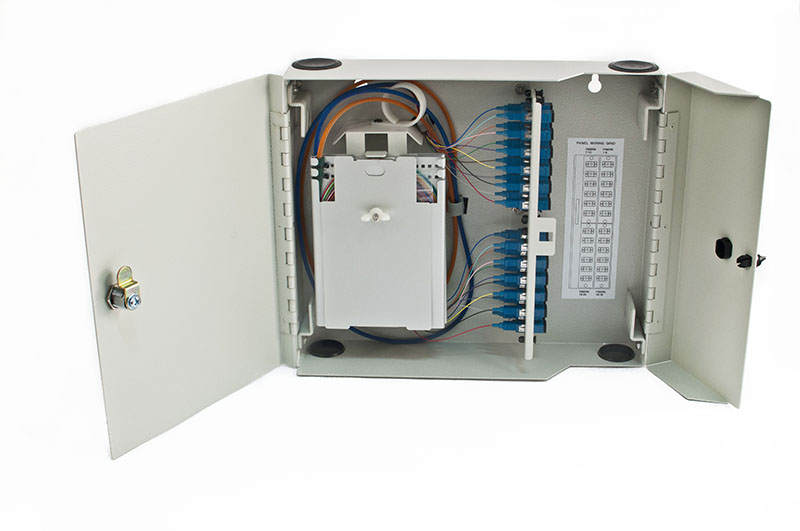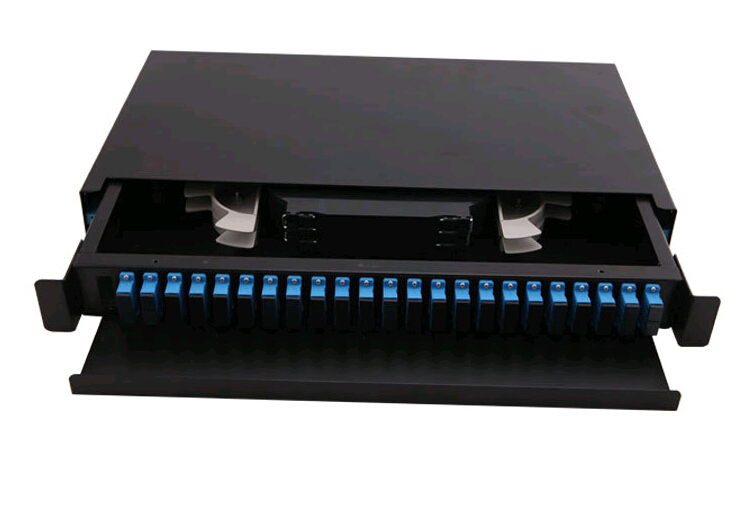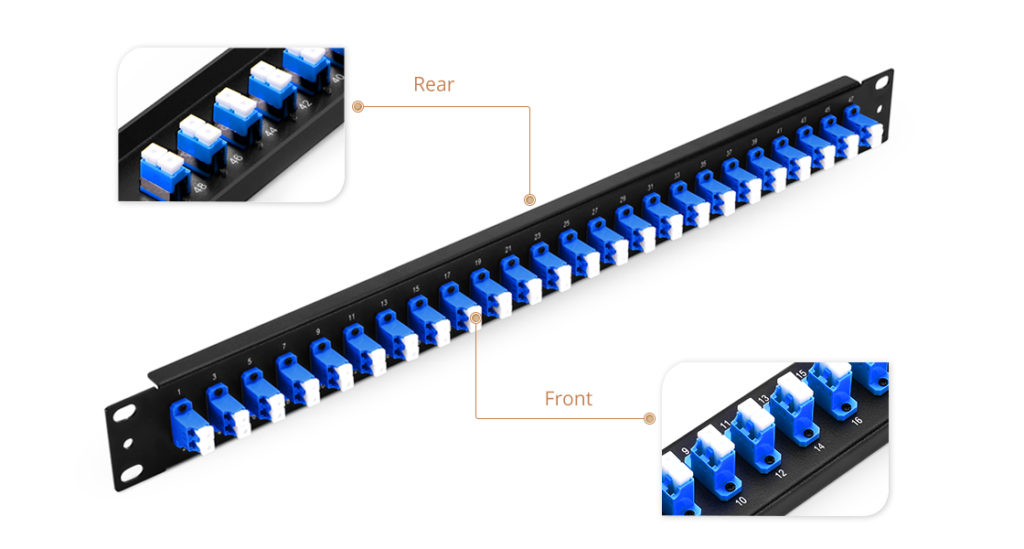Fiber termination box (FTB), known as optical termination box (OTB) as well, is a compact fiber management product of small size. It is widely adopted in FTTx cabling for both fiber cabling and cable management. In some circumstances, fiber termination box can be regarded as the mini size of fiber optic patch panel and optical distribution frame (ODF).
Currently, the market embraces a great amount of fiber optic termination boxes and other devices for cable management. And the names and model numbers of these fiber termination boxes vary from the design and idea of different manufacturers. Hence to identify the detailed classification of fiber termination box could be a hard task.
Roughly, fiber termination box can be categorized as fiber optic patch panel and fiber terminal box according to the size and applications. Judging by the appearance, fiber patch panel is of gibber size whereas fiber terminal box is smaller.
Fiber patch panels are of wall mounted type or mounted type usually with 19 inch size. Generally, there is a tray inside the fiber box that helps to hold and protect the fiber links. Various different kinds of fiber optic adapters can be pre-installed in fiber patch panels as the interface, via which the fiber box could connect with the external devices.
Besides fiber patch panels, one can also count on fiber terminal boxes for fiber distribution and organization. While typical fiber terminal boxes are with 12 ports or 24 ports, 8 ports, 36 ports, 48 ports and 96 ports fiber are available in the markets now. They are often installed with FC or ST adapters on the panel, either on the wall or put in horizontal line.
According to the design, FTB can be further divided into wall mount type and rack mount type.
The wall mount fiber termination boxes are designed for either pre-connectorized cables, field installation of connectors, or field splicing of pigtails. They offer an ideal solution for building entrance terminals, telecommunication closets, main cross-connects, computer rooms and other controlled environments.

The rack mount slide-out type fiber termination box usually for fiber splicing, distribution, termination, patching, storage and management in one unit. They support both cross-connect and interconnect architecture, and provide interfaces between outside plant cables and transmission equipment.

Moreover, in terms of installation environment, there are indoor FTB and outdoor FTB.
Indoor fiber termination box acts as the transition point between the risen cable and the horizontal cable, in this way, it provides operators much more flexibility when managing cables. Besides, indoor FTB makes it possible to leave space for overlength and terminated fibers, as well as for fiber splicing.
The outdoor fiber terminal boxes are environmentally sealed enclosures to distribute fibers for FTTX networks. They are also designed for fiber splicing, termination, and cable management.
Fiber termination box contains the shell, the internals (supporting frame, set fiber disc, fixing device) and optical fiber joint protective element. Prominent advantages of fiber termination box lie in efficient cable-fixing, welding and its protective role in machinery of the optical fiber.
A insulation is always demanded between cable metal components and cable terminal box shell in a fiber termination box, which provides space for cable terminal and remained fiber storage. In addition, fiber termination box also facilitate the installation of different occasions since it is easy to access, which turns out to be time and cost saving.
Fiber termination box is universally used in telephone, agricultural telephone network system, data and image transmission system, CATV cable television series, indoor cable through force access and branch connection. Fiber termination box is available for the distribution and termination connection for various kinds of fiber optic systems, especially suitable for mini-network terminal distribution, in which the optical cables, patch cores or pigtails are connected. In addition to that, fiber termination box can be applied to joint fiber pigtail, protect fiber optic splices and share out the connectivity to individual customers.
Fiber termination box nowadays plays an indispensable role in the field of communication network with greater reliability and flexibility. This article may simply provide you a guideline when choosing fiber termination box for your infrastructure, for more detailed information and tutorial, please visit www.fs.com.
Related Article:1000BASE-X SFP Modules Overview





